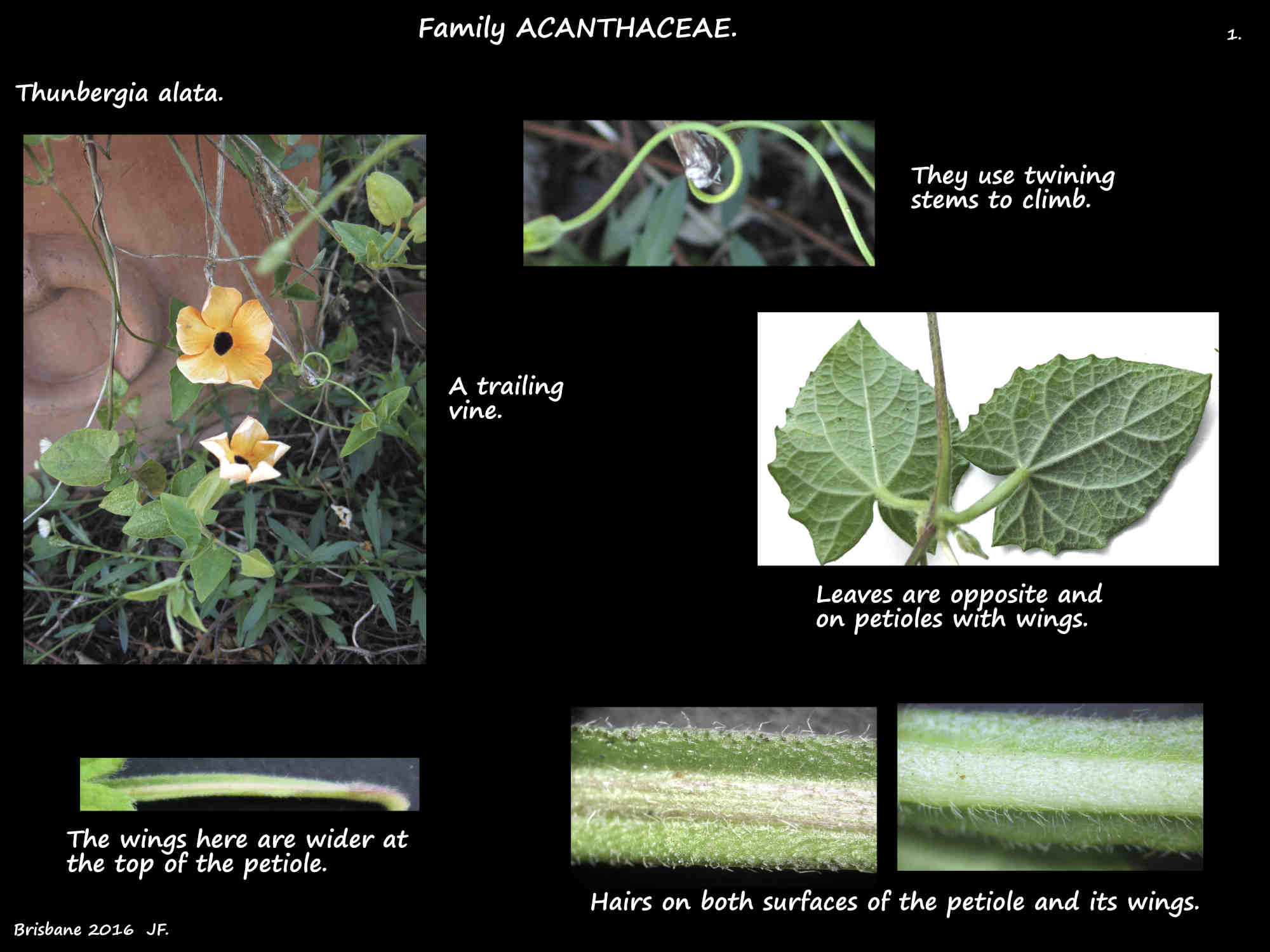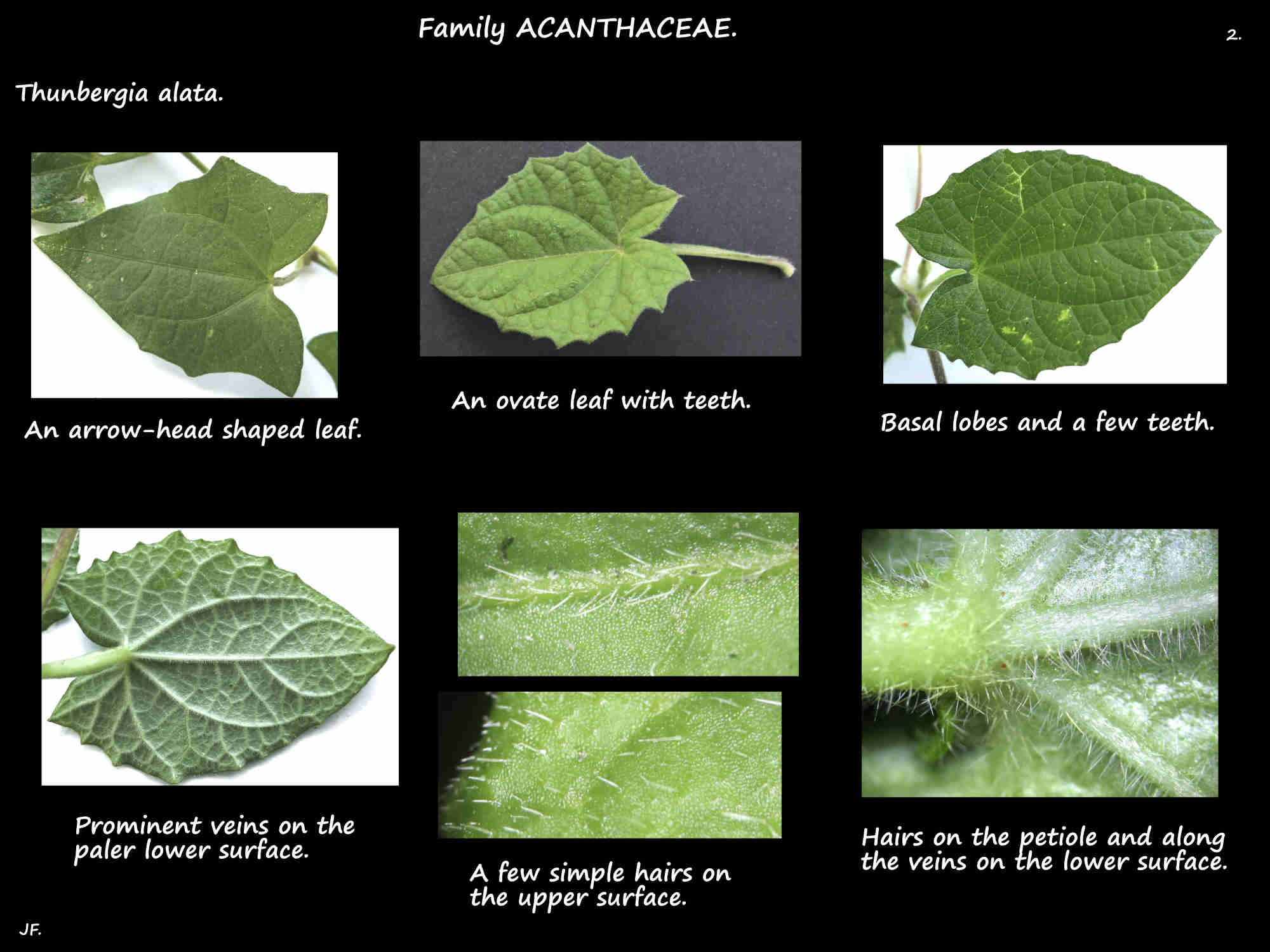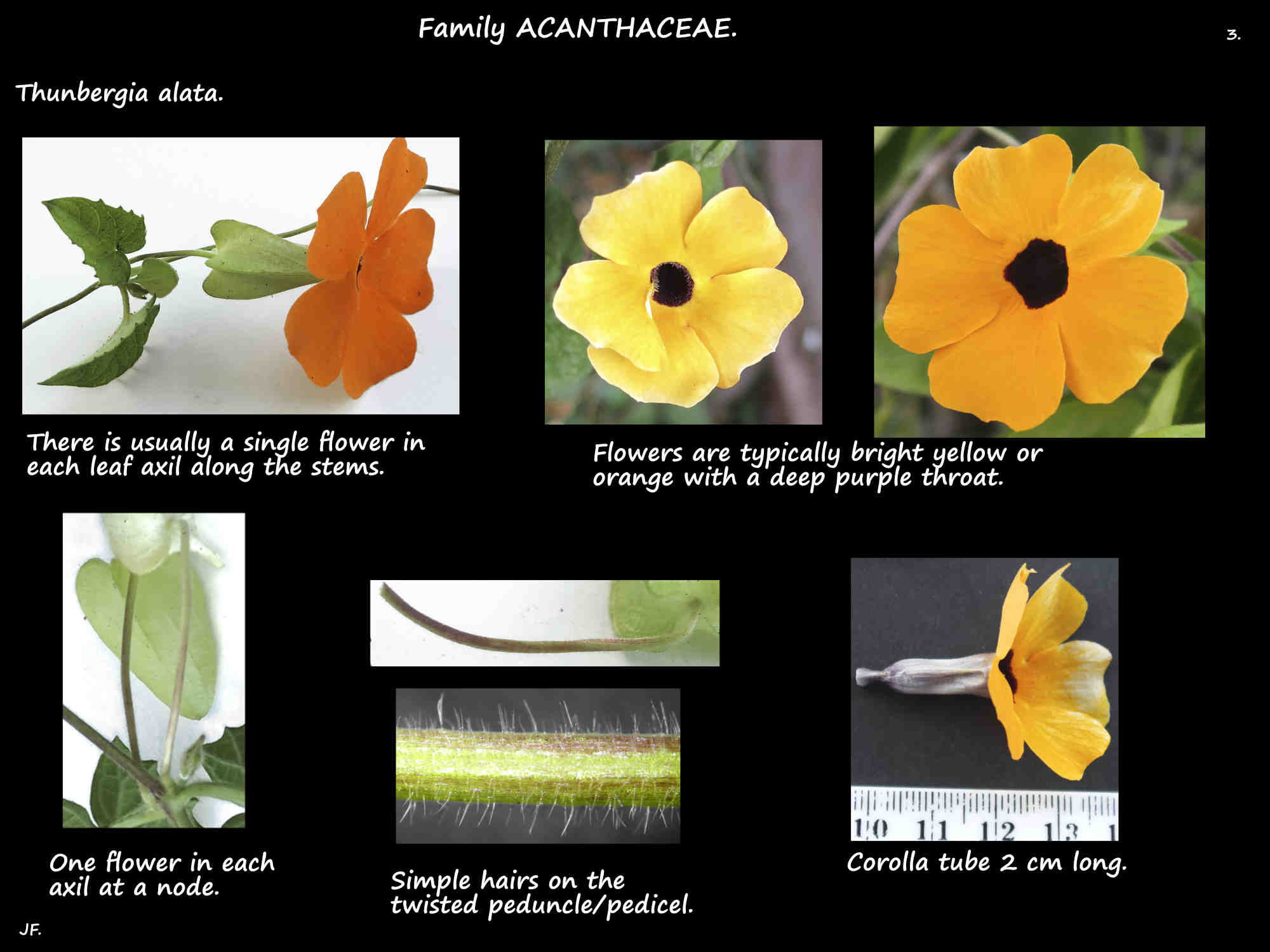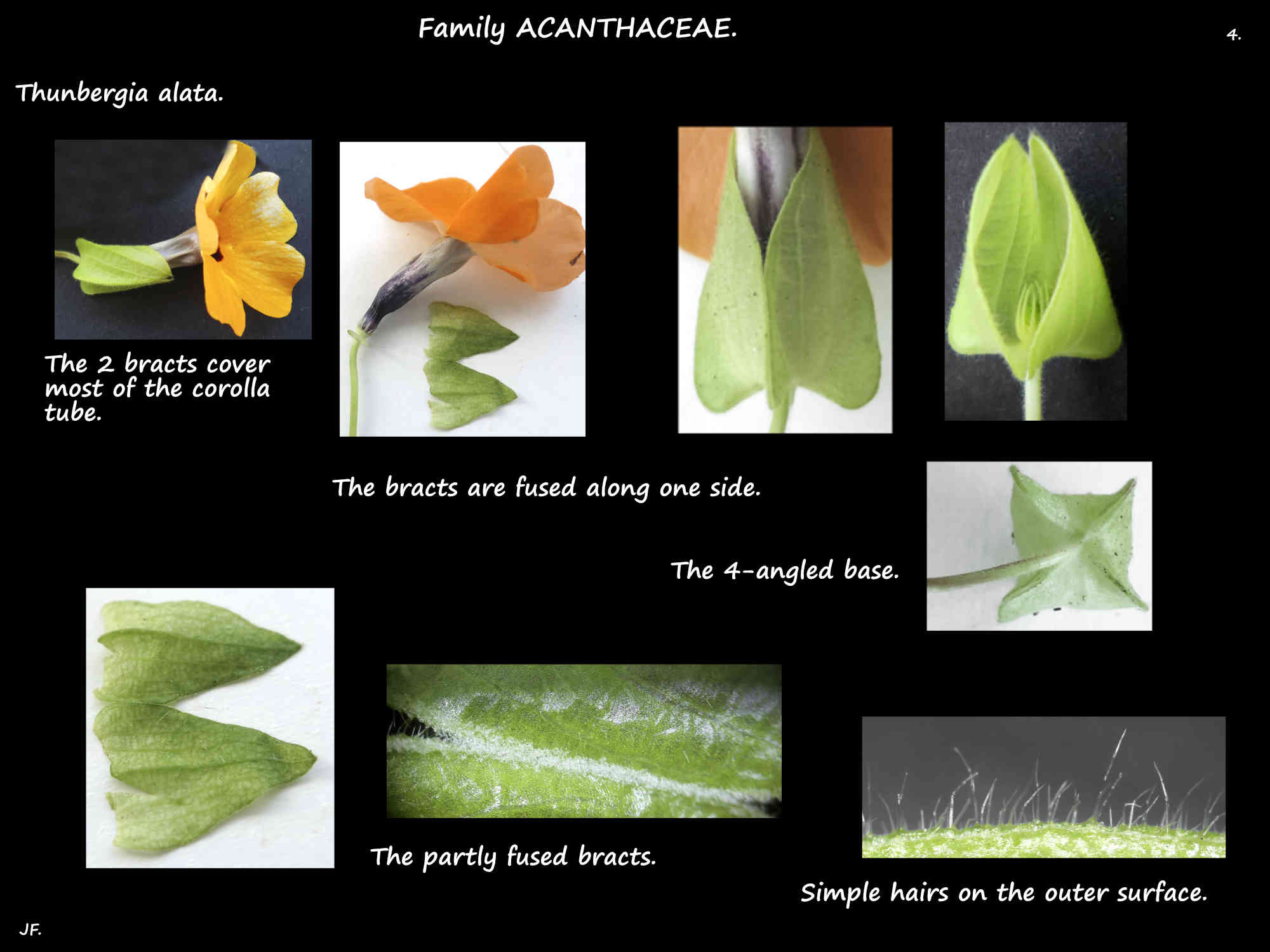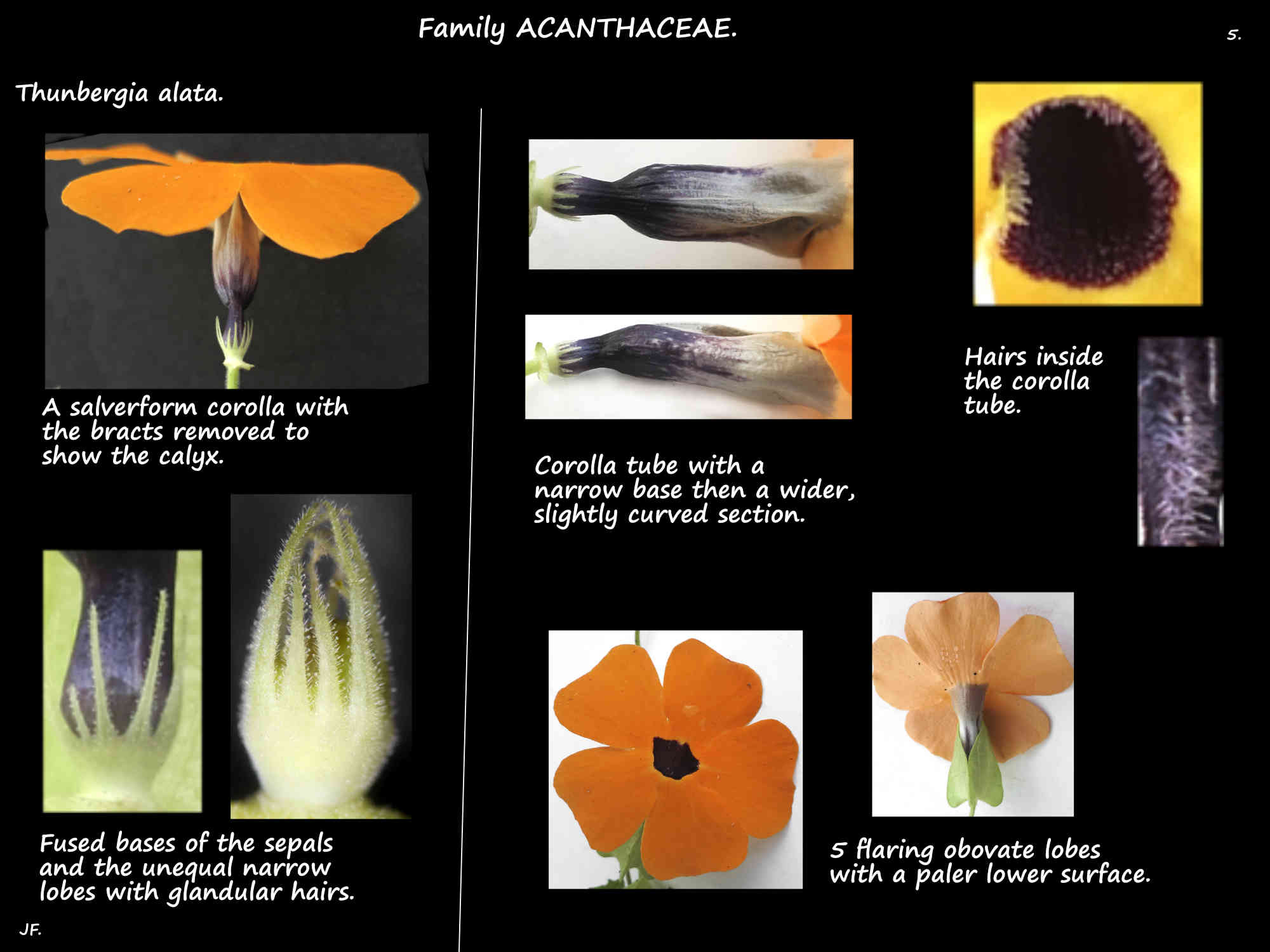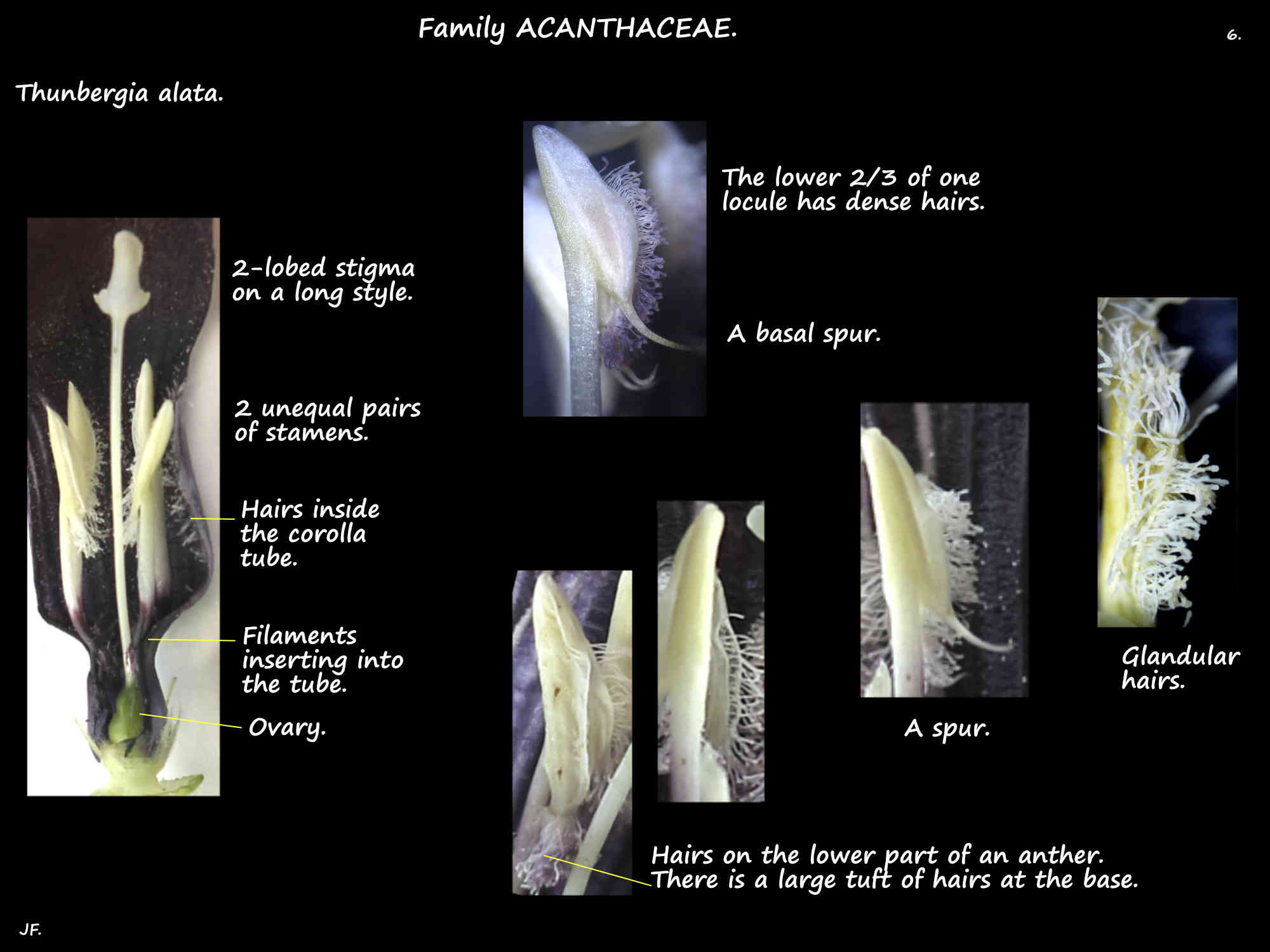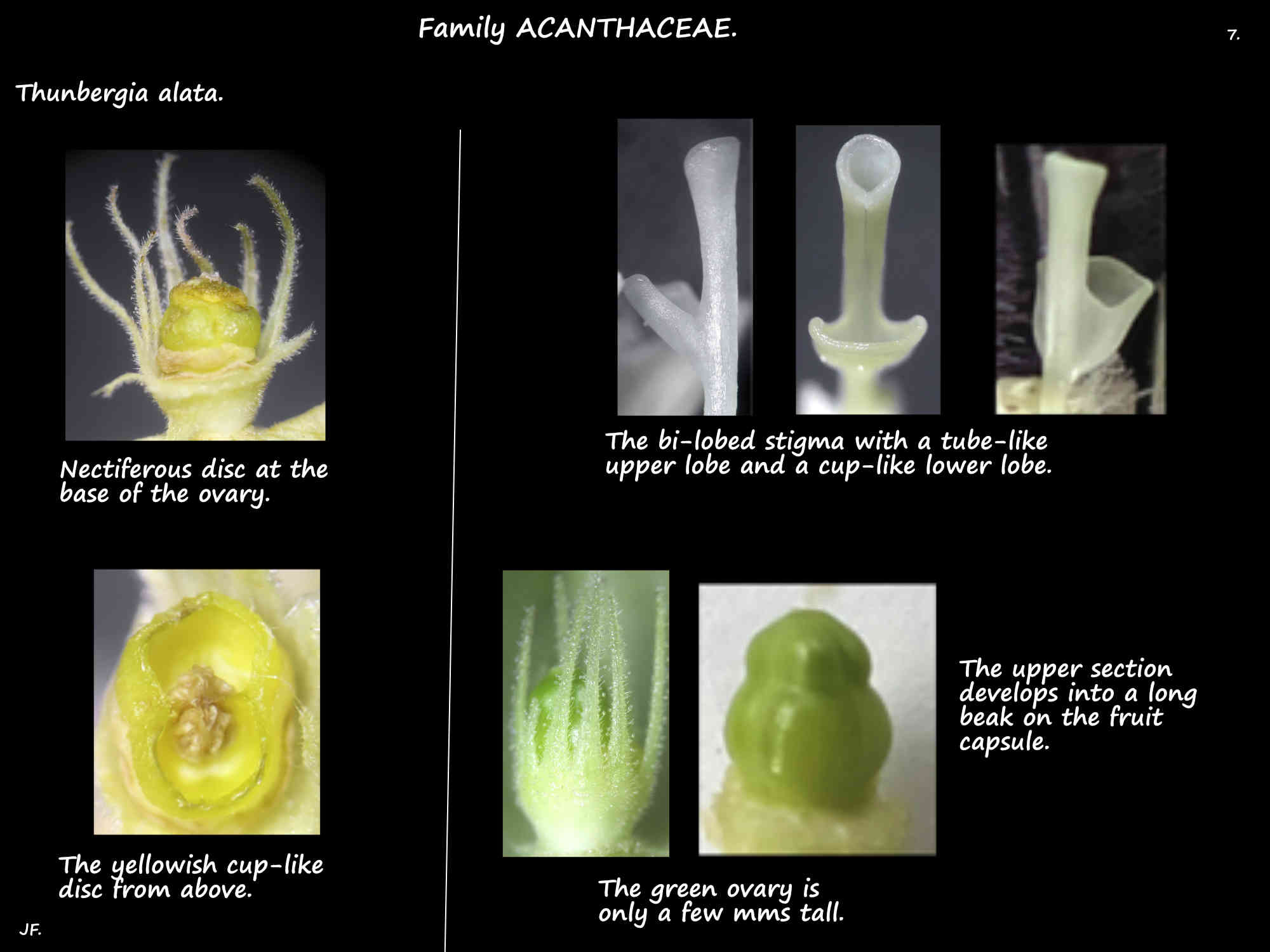Thunbergia alata.
The Black-eyed Susan vine is naturalised in S. E. Queensland and is now an environmental weed.
It is occasionally seen in gardens and numerous cultivars are sold by nurseries.
They are perennial trailing vines or twining climbers with one or many stems.
The stems are up to 3 or 4 m long and will root at the nodes.
The young green stems are thin and have simple hairs.
The base may be woody in older plants.
The oppositely arranged leaves are on petioles up to around 6 cm long.
Most or all of the leaves have very thin to obvious wings on both sides of the petiole.
The flat wings may be along the whole length of the petiole or only part of it.
The whole length may be of even width or be wider towards the top.
There are simple hairs on the petiole and the wings.
The leaf blades are ovate or lanceolate with outward pointing basal lobes (hastate).
The blades are up to around 8 cm long by 5 cm wide.
The wavy edges can be smooth or have teeth and the tip is pointed, sometimes with a mucro.
The upper surface may have a few hairs while the lower surface has them along the veins.
The axillary inflorescences are typically a single flower but occasionally a pair.
They are on hairy peduncles/pedicels up to 8 or 9 cm long.
At the top of the pedicel is a pair of large leafy bracts/bracteoles up to 2 or 3 cm long.
They are triangular in shape and fused along one side.
They are slightly folded down the centre so the base is squarish or 4-angled.
There are simple hairs on the outer surface.
The calyx has 10 to 16 or so narrow sepals up to 6 mm long.
Their bases are fused for up to 2 mm and the lobes have a few to dense glandular hairs.
The corolla is trumpet or salverform in shape.
The lower 5 mm or so around the ovary is a narrow tube.
The upper 2 cm is wider and may be straight or curved.
The 5 lobes are up to 2 cm long and flare out.
There are hairs inside the tube.
The corolla is typically yellow or bright orange with a deep purple throat that is almost black.
Variants can be pale orange, red or rarely white and, also rarely the throat may be the same colour as the lobes.
The 4 stamens are inserted just above the constricted section of the tube above the ovary.
The stamens are in 2 slightly unequal pairs with the longer pair being up to 9 mm.
The anthers, each with 2 pollen sacs are around 4 mm long and release pollen through long slits.
All the anthers have dense hairs along the lower two thirds of one sac.
There are also curved basal spurs up to 1.5 mm long.
The upper pair of anthers only have a spur on one sac.
The lower two anthers have spurs on both sacs.
There is a nectiferous disc around the base of the superior ovary.
The ovary has a single long style with a bi-lobed stigma.
The upper lobe is like a short tube open down one side while the lower section is cup-like.
The fruit are capsules with a spherical base containing the seeds and a narrower beak at the top.
The lower part is around 1 cm and the beak can be nearly 2 cm long.
They mature from green to brown and usually have dense short hairs.
The bracts remain around the capsule.
There are up to four 4 mm long semi-circular seeds that are dark brown with a ridged surface.
J.F.

